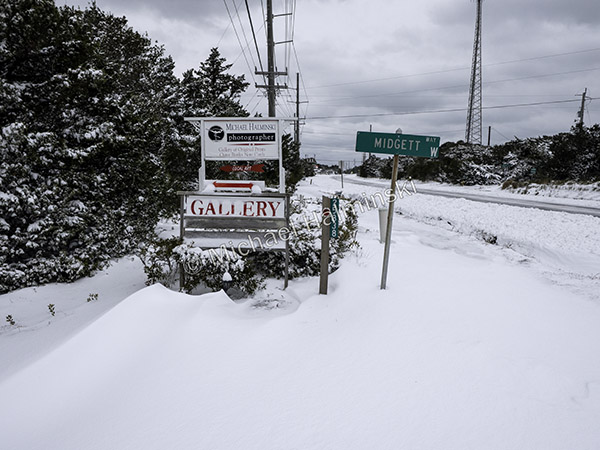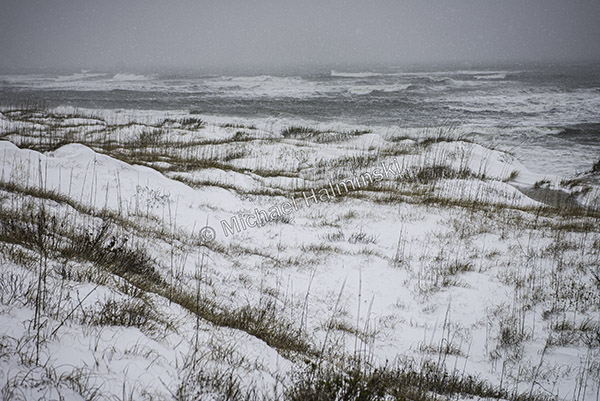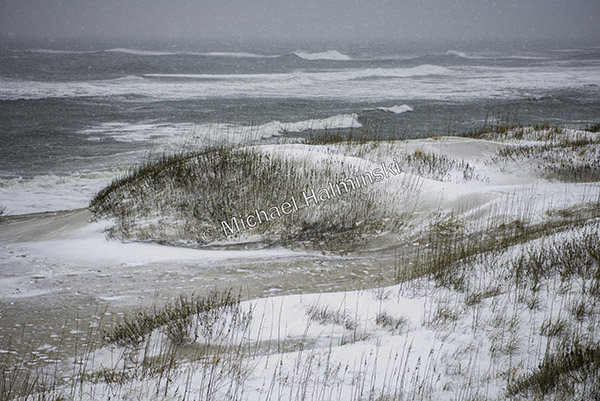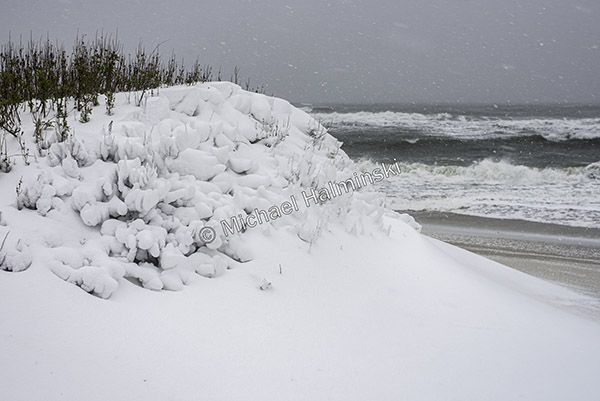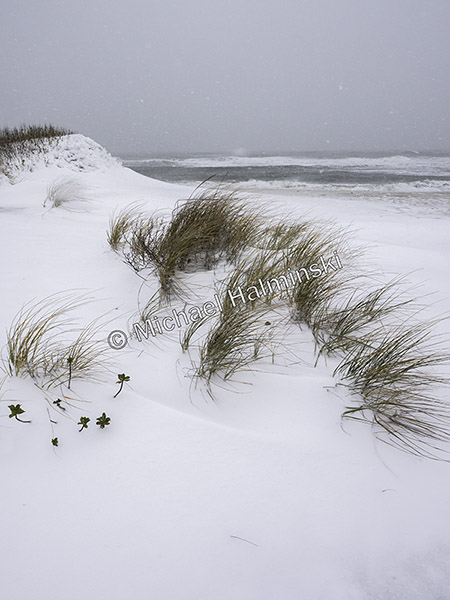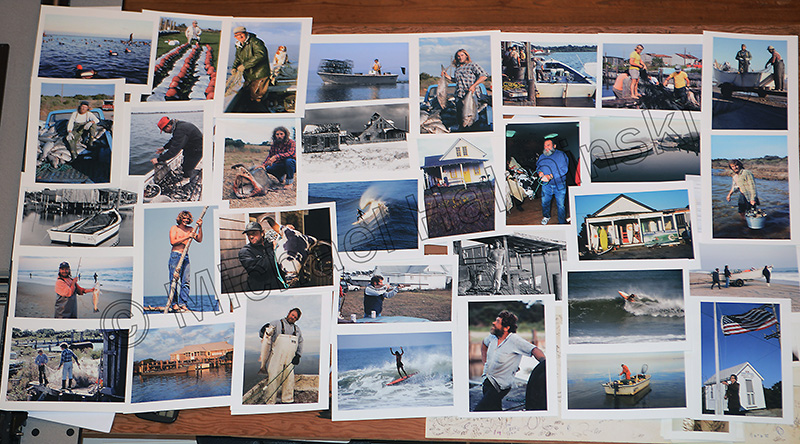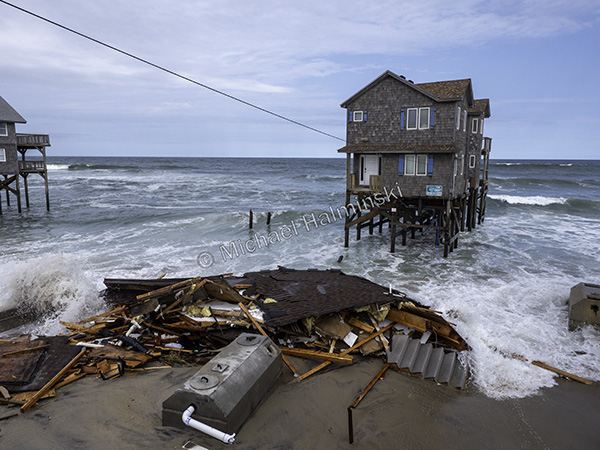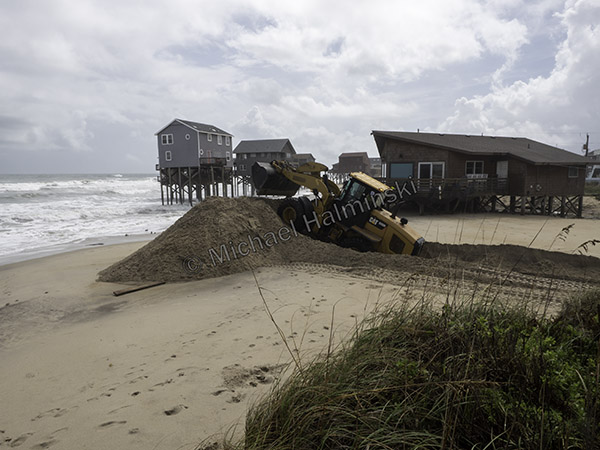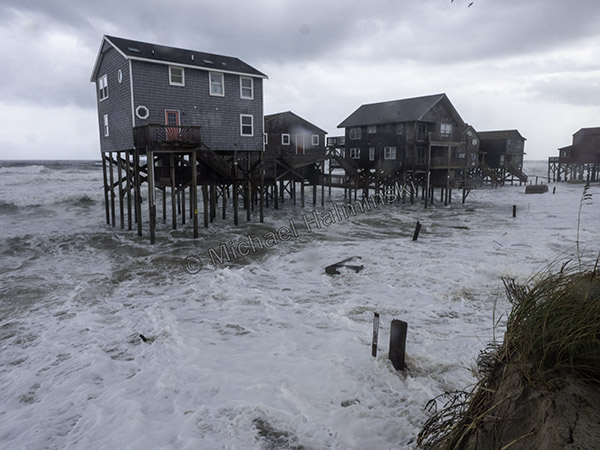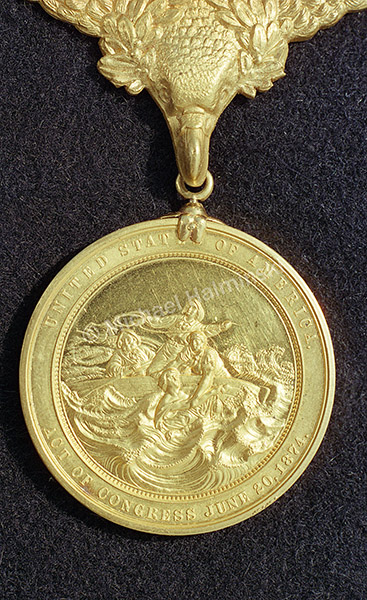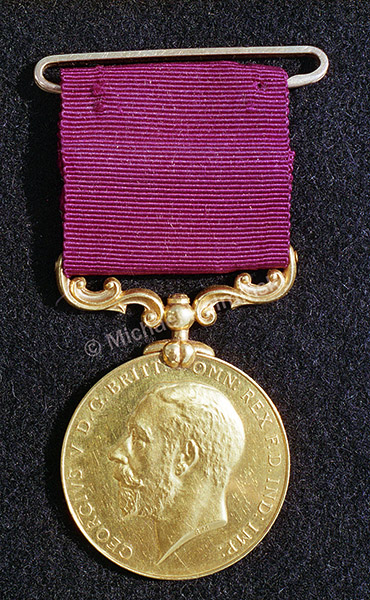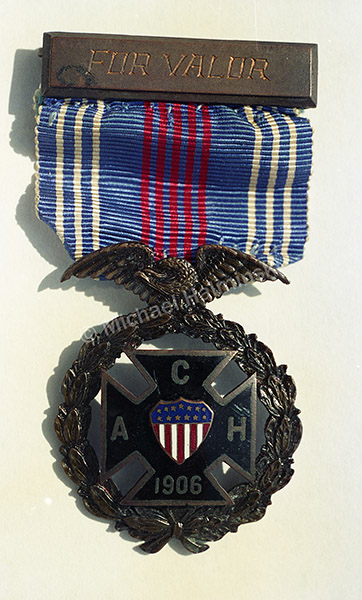The National Weather Service measured 8 inches of snow in Waves. It was relatively unusual, and it seems in the last 50 years, we’ve had a similar event about every 10 or 12 years. I’ve seen snowfall amounts a couple times, as much as a foot deep.
This recent storm was fun and visually stimulating. Although blowing a gale, temperatures never dropped much below freezing. It was exhilarating to be the first person to make footprints toward the beach near my home.
Never whiteout conditions, the snowfall was moderate yet lasted nearly 20 hours.
The seas were lively, but the real show for me was the beach.
Wind-driven snow continued as I checked different vantage points.
The dunes can be a treasure trove of possibilities for a camera.
While the tendency is to shoot horizontally, vertical compositions can be just as effective.
What the environment has in store for its next show is anyones guess!


